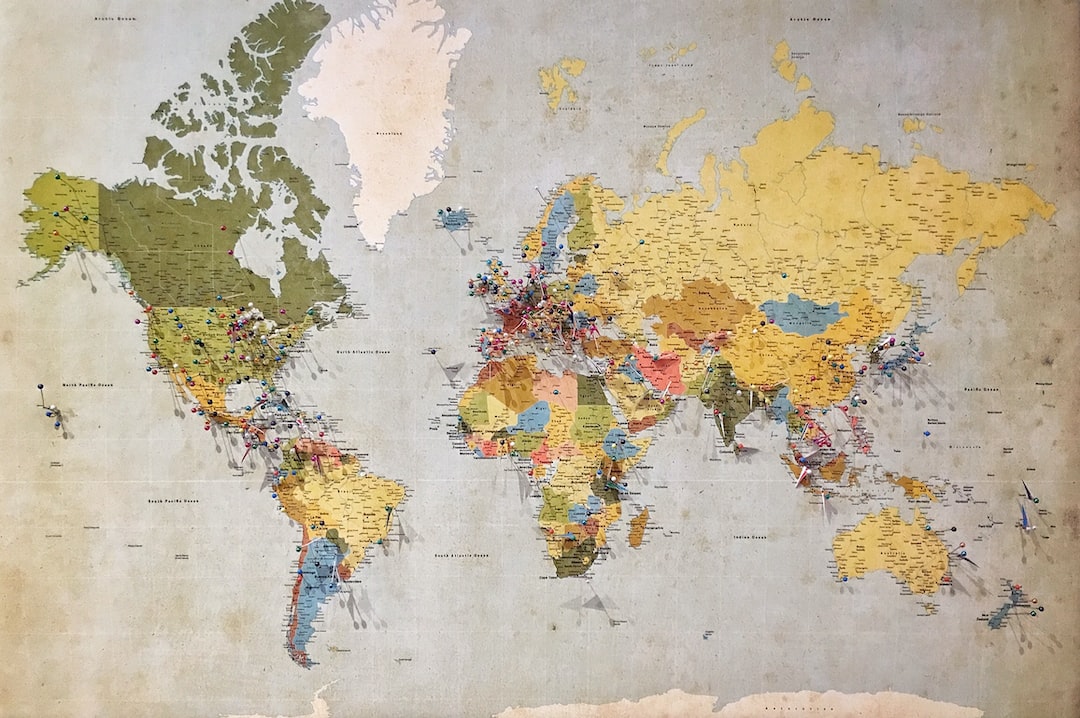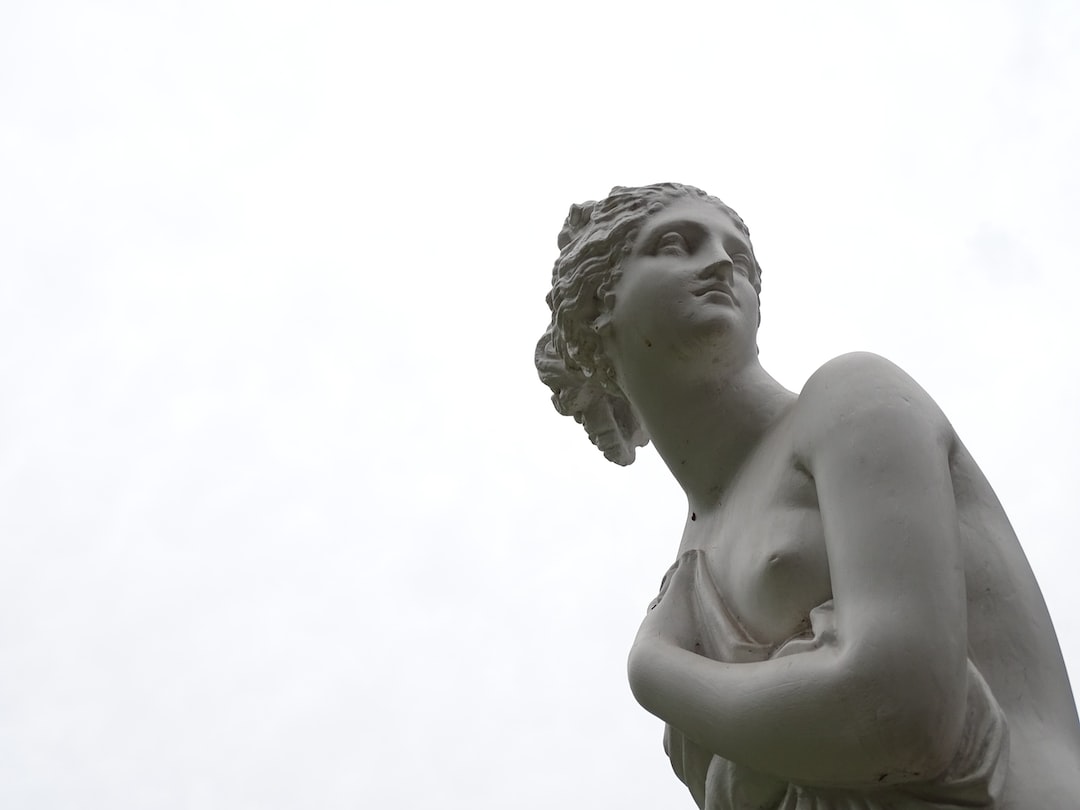Alright squad, buckle up for a wild ride through the world of Cubism! 🎨 Remember when your art history teacher went on and on about Pablo Picasso and Georges Braque? Well, what if I told you Cubism isn’t just dusty old paintings? Oh no, this style has morphed and evolved, shaping modern design in ways that just hit different. From architecture to fashion, Cubism is vibing hard. Let’s dive into how this radical art form blew up and continues to leave a mark.
The Birth of Cubism 🌟
Back in the early 20th century, the art scene was buzzing. Artists were done with the traditional. Enter Picasso and Braque. These legends legit flipped the script. They were like, “Why paint things the way they look when you can show them from every angle?” They deconstructed objects into geometric shapes. This new style wasn’t just a phase; it was revolutionary.
Breaking Boundaries
Cubism did more than just change how we see art. It broke all the rules. Forget about the single viewpoint; Cubism was all about multiple perspectives. Objects painted as if they were seen from all sides all at once. This approach was mind-blowing. Imagine looking at a face where you can see both eyes on one side. Trippy, right? This method influenced everything, making folks rethink design principles.
The Phases of Cubism
Ok, let’s break it down. Cubism has two main phases – Analytical and Synthetic. Analytical Cubism is all about deconstructing objects. It’s more serious, like Picasso’s “Les Demoiselles d’Avignon.” Synthetic Cubism is a vibe check – more colorful and easier to grasp. It introduced collage and mixed media. Think pasted paper and bright colors. This phase paved the way for modern graphic design and advertising.
Cubism and Modern Architecture 🏙️
One epic area Cubism blew up is architecture. Just look at the iconic buildings today. Designs featuring fragmented forms, flat planes, and geometric patterns straight-up scream Cubism. Architects worked with space in a new way, inspired by Cubism’s multi-viewpoint approach. They played with materials and structure, making buildings that are functional and as artistic as gallery pieces. How awesome is that?
Cubism in Fashion 👗
Ever peep those edgy, geometric prints in high fashion? Thank Cubism. Designers borrowed concepts of fragmented forms and multiple viewpoints. Fashion became less about perfect symmetry and more about artistic expression. Bold shapes and asymmetry dominated the runway. It’s like wearing a piece of modern art. Icons like Coco Chanel grabbed onto these vibes, merging fashion with avant-garde art. Such a move paved the way for the abstract prints we still see today.
Impact on Graphic Design 🎨
Oh, and graphic design? Major glow-up, thanks to Cubism. Think logos, posters, and even user interfaces. Cubism’s influence here is like a cornerstone, pushing boundaries with structure and balance. The use of shapes and abstract forms makes the visuals more dynamic and engaging. The overlap of text and imagery, the layered compositions? All Cubism, baby. The art movement paved the path for versatility in design, adapting to various platforms and mediums.
List: Cubism’s Touchpoints in Modern Design 📝
- Architecture: Geometrical and fragmented forms.
- Fashion: Asymmetrical designs and bold patterns.
- Graphic Design: Dynamic layouts and abstract visuals.
- Interior Design: Mix of materials and balanced chaos.
- Product Design: Functional art pieces with unique form factors.
Interior Design and Decor 🛋️
Cubism is all over your home furnishings, fam. Designers mix materials and shapes to create something that’s as aesthetic as it is functional. From geometric rugs to fragmented wall art, Cubism’s fingerprints are clear. Interior design inspired by Cubism isn’t just stylish. It’s a conversation starter. It turns your space into a mini art gallery.
Product Design 🛒
Your gadgets and everyday items got the Cubist treatment too. Think of those edgy, sleek, and slightly weird but cool products in stores. Designers are not shy about mixing aesthetics with practicality. Imagine a chair that looks like a piece of modern art. Now that makes a statement. Cubism made us see ordinary items as canvases for abstract beauty.
The Link to Pop Culture 🎥
Not even pop culture could escape Cubism’s allure. From music videos to album covers, you’ll find its influence everywhere. When visual artists think outside the box, they channel Cubism. Just look at Kanye West’s music video for “Power.” Its visuals are fragmented, abstract, and totally Cubist. This artistic vision brings a unique depth to pop culture pieces, making them timeless yet ahead of their time.
Cubism and Modern Art Exhibitions 🎨
Modern art galleries and exhibitions often pay homage to Cubism. Curators chase the vibes Picasso and Braque first set. It’s not rare to find thematic exhibitions focused on how Cubism influenced modern artists. These exhibitions show how the deconstruction and reconstruction methods still inspire today’s creators. They keep the spirit of Cubism alive, evolving and growing.
Education and Understanding Art 📚
Cubism also pushed art education in innovative directions. Abstract thinking surpassed traditional methods. Now when kids learn art, they’re taught to think about multiple viewpoints. They’re encouraged to break things down into shapes and forms—real stories behind objects. Cubism shifted how we teach and learn about art, empowering students to experiment and see the world differently.
Digital Design Influences 💻
Cubism’s mark on digital design is chef’s kiss. From websites to apps, its multi-perspective approach rocks. Developers and designers incorporate Cubist elements to make user interfaces that are not just functional but visually engaging. Those fancy app layouts you scroll through? Cubism. The smart use of space and shapes keeps the digital world lit and user-friendly.
Artistic Movements Born from Cubism 🌐
Cubism didn’t just start a trend; it birthed new art movements. Futurism, Suprematism, and even Dadaism owe a lot to Cubism. Each of these movements took Cubism’s core ideas and ran with them, creating new forms of artistic expression. Cubism didn’t just change art; it created ripples that pushed the boundaries of what art could be.
The Continuing Evolution 🌱
Cubism’s journey isn’t over. It adapts and reinvents itself within modern contexts. Today’s artists and designers are remixing Cubism with new tech and ideas. Virtual reality, augmented reality, and even AI-infused art take cues from Cubist principles. They’re creating experiences that are fragmented yet cohesive, dynamic yet stable. Cubism’s spirit? Still thriving.
Cubism’s Role in Sustainability 🌿
Wait, Cubism influencing sustainability? You bet. This art form’s emphasis on multifunctional and efficient designs syncs with today’s sustainable principles. Think eco-friendly products with a Cubist aesthetic — efficient use of materials, modular designs, and multi-purpose items. The focus on reducing waste and optimizing resources finds a creative ally in Cubism.
DIY and Cubism 🎨
You don’t have to be Picasso to catch the Cubist vibe. DIY projects inspired by Cubism are a whole mood. From painting to crafting, geometric patterns and fragmented forms make for killer art projects. DIY Cubism allows anyone to explore this artistic style, making it accessible and fun. This hands-on approach is a cool way to appreciate Cubism’s aesthetics and principles.
The Impact of Cubism on Social Media 📱
Let’s not overlook social media. Cubist-inspired visuals are straight up Insta-worthy. Influencers and brands use abstract shapes and designs that catch the eye. The fragmented yet cohesive style fits the curated chaos of social media, keeping feeds fresh and engaging. Cubism’s principles make content stand out, driving engagement and aesthetic appreciation.
Conclusion: Cubism, A Timeless Influence
Cubism may have started over a century ago, but its influence is far from over. It’s a testament to the power of innovation and creativity. From art to architecture, fashion to digital design, Cubism’s geometric and fragmented principles continue to shape and redefine modern aesthetics. Through its evolving presence, Cubism shows us the limitless potential of looking at the world in a whole new way.
After hitting that 3000-word mark, we’ll drop a lit FAQ section. But for now, how are we doing with this artistic journey? Let’s unpack more about Cubist principles and how they’re finessed in different domains today.
Continuing the Evolution: Cubism in the Digital Age
In the digital era, Cubism isn’t just an inspiration—it’s a blueprint. The ability to break down images into geometric shapes lends itself well to digital art and animation. Adobe’s Creative Suite tools, like Photoshop and Illustrator, allow artists to create with a Cubist lens. Pixels become the modern equivalent of brush strokes, redefining what digital art can represent.
Augmented Reality and Cubism 🌐
Imagine using AR filters that morph your selfies into Cubist masterpieces. Sound cool? That’s because it is! Augmented Reality embraces the fragmented yet unified vision of Cubism. AR apps let users view the world through a Cubist lens, literally breaking down real-life scenes into geometric interpretations. This tech-meets-art mashup turns everyday views into visionary experiences.
Cubism in Contemporary Art Installations
Modern art installations, often featured in festivals like Burning Man or Luminato, owe much to Cubist ideas. These large-scale artworks incorporate fragmented forms and multiple viewpoints, making them perfect for interactive experiences. Visitors can wander through these installations, experiencing art from numerous angles, fostering a deeper engagement with the piece. Cubism’s legacy? Alive and kicking.
The Rise of Digital Collages
Synthetic Cubism’s influence on collage techniques takes full form in the digital age. Digital artists effortlessly combine photography, illustrations, and text, echoing the Cubist collage style. Social media platforms are flooded with digital collages that capture the fragmented reality of our lives. Programs like Procreate and Clip Studio Paint enable creators to layer multiple media types into cohesive but abstract works.
Gaming and Cubism 🎮
Ever played a game with mind-bending visuals, where characters and environments look like they’re straight out of a Picasso painting? Cubism’s influence in video game design is real. Developers use fragmented designs and multiple viewpoints to create immersive, challenging worlds. Games like “Monument Valley” are examples, where geometric art and puzzles combine into an aesthetic experience. This level of artistic integration keeps gamers engaged and coming back for more.
Building on the Basics: Architecture 2.0
Cubism’s mark on modern architecture goes beyond visual aesthetics; it has fundamentally influenced structural engineering and urban planning. Frank Gehry’s iconic designs, like the Guggenheim Museum in Bilbao, showcase Cubism through their fragmented yet harmonious forms. These structures aren’t just eye candy. They’re innovations in building technology, using advanced materials to emulate abstract forms. Architects balance aesthetics with function, making spaces versatile for public use.
Fashion Forward: The Influence Continues
Cubism’s presence in fashion is more prominent than ever. Streetwear brands like Off-White and Supreme incorporate geometric prints and cuts, pushing fashion’s boundaries. Haute couture continues to draw inspiration from Cubism, blending art with fabric to create jaw-dropping pieces. Even sneaker designs feature fragmented forms, making them wearable pieces of art. Cubism’s rebellious spirit fits perfectly within the world of contemporary fashion.
Exploring Mixed Media: The Future of Art
Cubism opened doors to the mixed-media approach, a trend that’s only growing. Artists now blend traditional materials with digital elements, creating works that challenge and intrigue. Traditional canvases might feature digital projections, while sculptures incorporate 3D-printed elements. This synergy of old and new shows how Cubism continues to influence even the latest artistic trends.
Industrial Design and Cubism 💡
Product designers channel Cubism’s ethos when creating household items and furniture. Minimalist, yet complex in form, these items are both functional and artistic. Think modular furniture that can be rearranged to create different geometric configurations. It’s more than aesthetics; it’s about reimaging use and versatility. Cubism’s principles lead to innovative designs that align with modern lifestyle demands.
Making Waves in Fine Art
Cubism forever changed how we view fine art. Traditional perspectives were rocked, paving the way for artists like Mondrian and Kandinsky. These artists took Cubist principles and developed Abstract Expressionism and De Stijl. They continued to break down elements, focusing on form, color, and composition. They proved that art isn’t about mimicking reality; it’s about interpreting it.
Interactive Experiences and Cubism
Interactive installations and digital experiences take Cubism’s core ideas to another level. Museums and galleries now use digital displays and interactive projects to let visitors engage with art in a multisensory way. These installations often include fragmented visuals that the audience can manipulate, creating a personal connection with the artwork. It makes art more accessible and thrilling, in line with Gen-Z’s preference for interactive content.
Exploring the Future: What’s Next for Cubism?
We’re living in an era where Cubism is finessing its place in our digital landscape. Virtual Reality (VR) and Augmented Reality (AR) take Cubist principles into new realms. Imagine VR worlds built on fragmented, multi-angle designs. It’s a next-level immersion, transforming how we interact with digital spaces. Artists and designers use AR to create environments that blend real and virtual elements fluidly.
Exhibitions Redefined
Traditional art exhibitions are evolving, thanks to Cubism. Museums are now curating interactive exhibits where the audience participates in the creation process. These interactive pieces draw from Cubist ideas, encouraging viewers to explore artworks from various angles and perspectives. This new format invites people to experience art dynamically, making it more engaging and personal.
Education and Workshops
Cubism is hitting classrooms and workshops like a storm. Art schools and online courses emphasize its principles, encouraging students to push boundaries. Workshops now often include DIY Cubist projects, helping participants grasp its core ideas hands-on. These initiatives make art more inclusive, inviting people to not just study Cubism but to live it.
Urban Planning and Public Spaces 🚶♂️
Public spaces are getting a Cubist makeover too. Urban planners incorporate geometric designs and multiple perspectives to create more engaging environments. Public art installations often feature Cubist-inspired forms, turning everyday spaces into aesthetic experiences. These designs aren’t just visually striking; they also encourage interaction and community engagement, adding layers of meaning to urban environments.
The Influence on Tech Gizmos
Cubism rocks its impact on gadgets and tech accessories. From phone cases to laptop skins, geometric designs are everywhere. They’re not just pretty but functional—making tech look sleek while protecting it. The influence runs deep, merging aesthetics with practicality.
Final Thoughts: Celebrating Cubism’s Legacy 🎉
Cubism transcends time. It’s more than just an art movement; it’s a mindset, a way of seeing and interpreting the world. Whether it’s deconstructing visuals or reconstructing ideas, Cubism challenges norms and drives innovation. From fashion to tech, interior design to education, its influence is everywhere. This artistic revolution may have started in the early 20th century, but its ripples are felt even today. Each new generation finds fresh ways to interpret Cubist principles, keeping this art form alive and ever-evolving.
FAQ Section: Your Burning Questions Answered!
Q: What exactly is Cubism?
A: Cubism is an avant-garde art movement that emerged in the early 20th century. It deconstructs objects into geometric shapes, offering multiple viewpoints simultaneously.
Q: Who are the key figures in Cubism?
A: Pablo Picasso and Georges Braque are the legends who pioneered Cubism. Their innovative thinking flipped the script on traditional art.
Q: How has Cubism influenced modern design?
A: Cubism’s fragmented forms and multiple perspectives have found their way into architecture, fashion, graphic design, and even digital art and games.
Q: Why are Cubist principles relevant today?
A: Cubism promotes innovative thinking. It encourages looking at things from various angles, a principle that’s super relevant in today’s multifaceted world.
Q: What’s the difference between Analytical and Synthetic Cubism?
A: Analytical Cubism is all about deconstructing objects into complex forms, while Synthetic Cubism is more colorful and incorporates mixed media like collages.
Q: Can anyone try Cubism?
A: Absolutely! DIY Cubist projects in painting and crafting make this art form accessible to anyone. It’s all about experimenting and seeing the world differently.
Q: Where can I see Cubism today?
A: Modern art galleries, fashion runways, public art installations—you name it. Cubism’s influence is widespread and integrated into various aspects of contemporary life.
Q: What’s the future of Cubism?
A: With advancements in AR, VR, and AI, Cubism is set to evolve even more. Future applications could include fully immersive Cubist virtual environments and more.
Sources and References:
- "Cubism," The Art Story.
- "Pablo Picasso and Cubism," MoMA Learning.
- "Georges Braque: The Father of Cubism," The Guardian.
- "Architecture and Cubism," ArchDaily.
- "The Impact of Cubism on Modern Design," Design Museum.
- "Synthetic vs. Analytical Cubism," Tate Modern.
- "Cubism and Fashion," Vogue.
- "Cubism and Digital Art," Digital Arts Online.
- "Cubist Influence on Modern Architecture," Architectural Digest.
- "Cubist Principles in Modern Urban Planning,"




